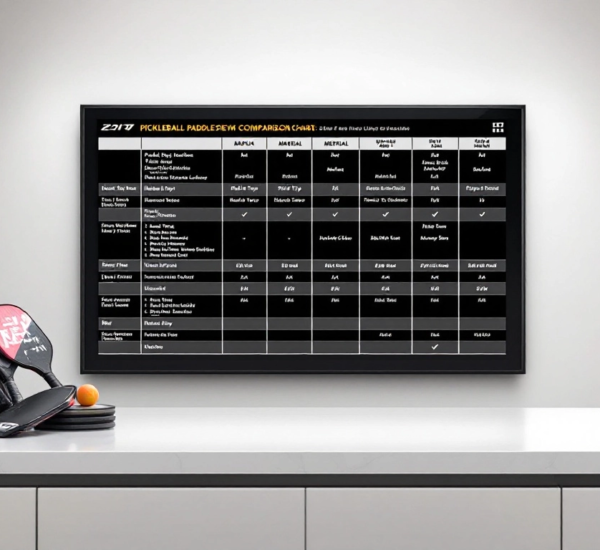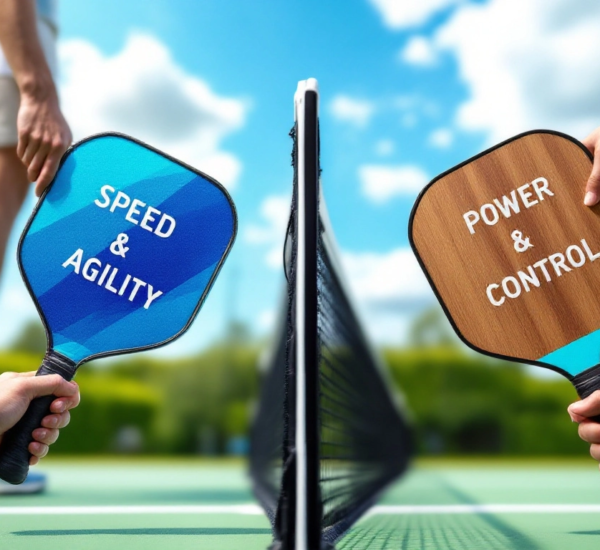Elevate your pickleball game with expert strategies designed for doubles play. Discover the essential tips and techniques to outsmart your opponents and lead your team to victory!
Table of Contents
- Introduction
- The Importance of Positioning
- Effective Communication Techniques
- Smart Shot Selection
- Enhancing Court Awareness
- Conclusion
- Frequently Asked Questions
Introduction
Pickleball has rapidly risen in popularity, captivating players of all ages with its accessible yet competitive nature. Doubles play introduces a new layer of strategy, making it crucial to understand how to harmonize with your partner and execute a winning game plan. In this comprehensive guide, we’ll delve into advanced pickleball strategies specific to doubles play, covering everything from optimal positioning to smart shot selection. Whether you’re a seasoned player or a newcomer eager to improve, these insights will help you dominate the court.
The Importance of Positioning
Positioning in pickleball doubles is the cornerstone of a robust defense and versatile offense. Proper alignment with your partner can significantly impact the outcome of each point.
Baseline Strategy
At the baseline, players should adopt a staggered formation to cover more ground. This setup allows you to respond to deep volleys and lobs while maintaining an effective return-of-serve stance.
Net Dominance
Transitioning to the net quickly is crucial in doubles. Establishing a strong front-line presence can apply pressure on your opponents, forcing them to make errors. Ensure to keep your paddles up and be ready for quick volleys.
Effective Communication Techniques
Seamless communication with your partner can be the difference between victory and defeat in doubles play. Let’s explore how to enhance team coordination.
Verbal Cues
Develop a set of verbal signals with your partner to indicate actions like switching sides or calling for certain shots. Phrases like “mine” or “yours” should be clearly understood by both players to avoid confusion.
Non-Verbal Signals
Use subtle gestures or pre-agreed non-verbal signals to communicate during intense rally moments. A simple nod or paddle motion can effectively convey strategy on the fly.
Smart Shot Selection
Choosing the right shot at the right moment can exploit your opponents’ weaknesses and create winning opportunities.
Dinks and Drops
Mastering the dink shot slows the game’s pace, allowing you to dictate play at the net. Use drop shots strategically to neutralize aggressive players and regain control.
Lobs and Smashes
Lobs can be a powerful tool to push opponents back, creating space for net play. Pairing lobs with well-timed smashes can dismantle defensive formations.
Enhancing Court Awareness
To play effectively, players need to hone their spatial awareness. Recognizing and reacting to opponents’ patterns can turn the tide of a match.
Tracking Opponent Movements
Keep an eye on your opponents’ positioning and adapt your playstyle accordingly. Noticing when they favor a certain side or shot can guide your strategy.
Adjusting Strategies
Remain flexible in your approach. If a particular strategy isn’t working, communicate with your partner and make quick adjustments.
Conclusion
Mastering doubles play in pickleball requires more than just individual skill; it demands a cohesive team effort and strategic thinking. By focusing on positioning, communication, shot selection, and court awareness, players can enhance their performance and outwit opponents. Implement these strategies, and you’ll be well on your way to dominating the pickleball court.
For more tips and information, explore our comprehensive guide on pickleball.
Frequently Asked Questions
What is the best pickleball strategy for beginners?
Beginners should focus on mastering the basics of positioning and communication with their partner. Building a solid foundation in these areas will naturally lead to improved play.
How can I improve my pickleball doubles game?
Regular practice focusing on team drills, communication exercises, and strategic shot-making can significantly enhance your doubles play performance.
Why is positioning so crucial in doubles?
Positioning allows players to effectively cover the court, anticipate opponents’ shots, and execute strategic plays. It is fundamental to both defensive and offensive phases of the game.




